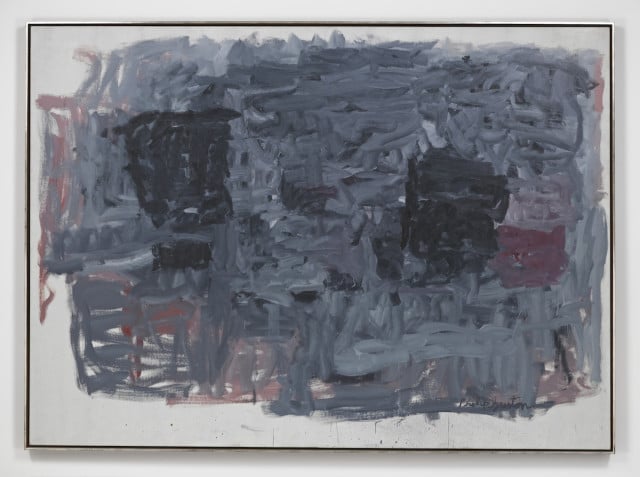Galleries
Philip Guston, the anti-Mondrian?
THE DAILY PIC: At Hauser & Wirth, Guston abstracts once counted as figuration.

THE DAILY PIC: At Hauser & Wirth, Guston abstracts once counted as figuration.

by
Blake Gopnik

THE DAILY PIC (#1571): The Philip Guston story has a simple outline: Great artist moves from youthful figuration to the cutting edge of abstraction and then back again to figuration, adding new, socially-engaged content that foreshadows, and influences, postmodernism.
This 1964 abstraction, from the big Guston show at Hauser & Wirth gallery in New York, seems already to include the germ of his figuration, in those head-like blobs to left and right.
Here’s the thing, though: I’ve been researching art criticism from the later 1940s, at just the moment when abstraction is supposed to be taking over – and I’ve been finding writers talking about just the opposite, about a “trend back toward the realm of natural appearances.” At least out on the cutting edge, the trend after the war wasn’t necessarily from American social realism (Thomas Hart Benton) toward abstraction (Benton’s pupil Jackson Pollock), although that’s often how the story gets told. It was just as much a trend from the untethered, idealizing, uncompromising abstraction of Piet Mondrian and Laszlo Moholy-Nagy, two major influences on the American scene, toward picture-making that was much more engaged with the world. The “expression” in Abstract Expressionism, by those lights, was the mark of a human presence, and thus a kind of figuration. That was the context Guston was working in, so it’s no wonder that figures lurk in his early abstraction and then erupt to the surface in the end. (© The Estate of Philip Guston, courtesy Hauser & Wirth)
For a full survey of past Daily Pics visit blakegopnik.com/archive.